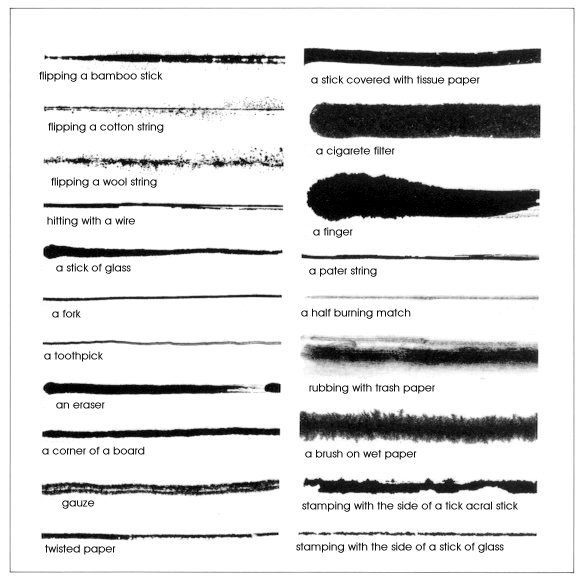|
(2) Lines and tools A line with a hard edge which has a wide width is strong, whereas that of a free-hand line which is thin and long looks weak. There are many tools used to draw a line as mentioned on page 41, and it is important to know their particularities by drawing lines with their styles and to be ready to use them on KOHSEI (Basic Art & Design). An elegant flowing line, a speedy line, a strong line, a smooth line, a simple line, and a complicated line - there are many expressions to draw only one line. We can know that there are many lines which have sensitively delicate differences by the choice of tools. Historically, there are not so many European works using lines until the 19th century, though many lines were used in Oriental pictures. Today, line art has increased in Europe and expanded in most formative arts of pictures, sculptures, and designs. Attention should be paid to the fact that the more abstract KOHSEI (Basic Art & Design) tend to become, the more important duties lines have.
· Figure 43 is a comparative list by drawing lines with tools which are originally made for drawing
lines. On the other hand, the lines in Figure 44 are drawn by tools which are not originally for
drawing lines. In this case, it is hard to draw clear lines as in Figure 43, but each of the tools can
draw lines which are individual and particular.
|
|||
